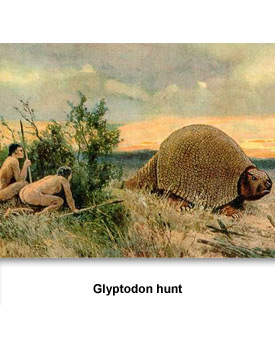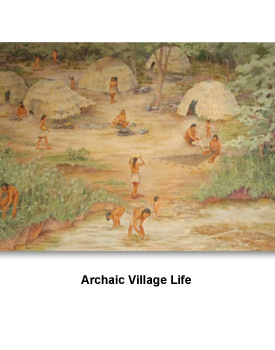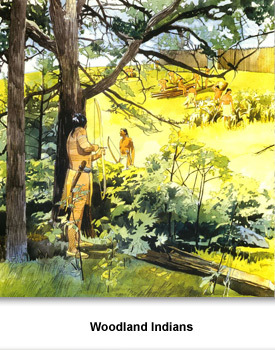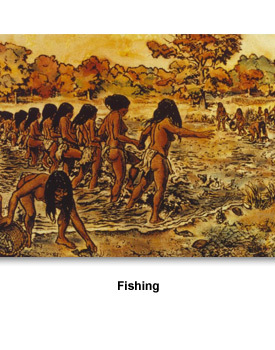First Tennesseans
Who lived in Tennessee
Humans first entered the lands we now call Tennessee more than 12,000 years ago during the last Ice Age.
For thousands of years these native people lived in the state. In fact, Indians have lived in Tennessee much longer than any other people. During this time, Indians changed the ways that they lived. The way in which people lived is called their culture.
Archaeologists divide prehistoric Indian cultures in Tennessee into four major periods:
- Paleo-Indians
- Archaic Indians
- Woodland Indians
- Mississippian Indians
Each of these cultural groups had their own distinct way of life. The Paleo-Indians were the first known inhabitants of Tennessee. They entered our state over 12,000 years ago. They were hunters that followed migrating herds of late Ice Age animals like the mastodon.
Very little is known about the Paleo-Indians because most of the artifacts they left behind have been lost to time.
The Archaic people were different from the Paleo. The larger Ice Age animals became extinct so the Archaic Indians were forced to change their way of life. They were hunters/gatherers. They hunted smaller animals, and also gathered edible plants.
The Archaic Indians were innovators. They invented a new hunting tool called an atlatl which was a spear thrower. They also were the first people to introduce pottery to Tennessee.
The Woodland Indians developed out of the Archaic. Woodland Indians were Tennessee’s first farmers. They lived in semi-permanent settlements and developed vast trade networks that stretched all the way from the Gulf Coast to the Great Lakes and beyond the Mississippi River. They also built burial mounds for their dead.
The last major prehistoric people to live in our state were the Mississippian Indians. Many people refer to them as the moundbuilders because they built large ceremonial mounds throughout the state and southeast.
The Mississippians were highly dependent on maize agriculture, and they developed complex societies. They also left behind some of the most spectacular artifacts from Tennessee’s prehistoric past.
These four major prehistoric Indian cultures were part of a continuing cultural development very different but each one was unique. By studying the artifacts they left behind, we can learn more about ancient life in our state.
Picture Credits:
- Painting of a glyptodont hunt. A glyptodont is a large prehistoric armadillo-like creature. This painting was made by Heinrich Harder in the 1920s. It shows two hunters hiding, while preparing to attack a glyptodont. Wikipedia Foundation
- Painting entitled, “Archaic Village Life.” This painting was created by Carlyle Urello. It shows five grass dwellings and people engaged in numerous activities. A man is shown cutting cane, while women are shown making baskets and nets. Others are shown carrying baskets as well as collecting and preparing mussels. Tennessee State Museum Collection, 95.94.3
- Painting showing Woodland Indians. This painting shows two men with bows and arrows in the foreground. In the background others are shown engaging in a variety of tasks including cultivating plants, carrying baskets, and constructing a wall. Illinois State Museum
- Painting showing a large group of Mississippian Indians fishing. Numerous people are shown standing in a straight line in water while moving their legs in order to disturb fish. Others are shown collecting fish in baskets near the shore. Illinois State Museum
First Tennesseans >> Who lived in Tennessee >>




 Sponsored by: National Endowment for the Humanities
Sponsored by: National Endowment for the Humanities